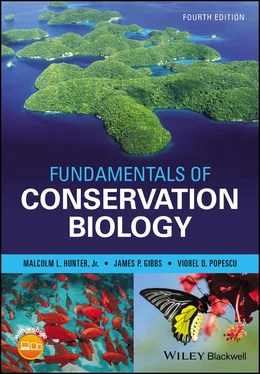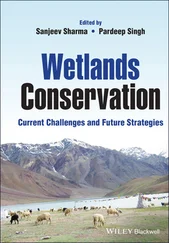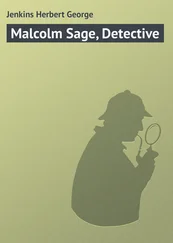The role of different species in medicine is of particular interest to conservation biologists because it so clearly highlights the need to maintain biodiversity. From a biochemical perspective every species is unique and thus potentially could be the source of a major scientific breakthrough. If we lose a species, we may have lost an invaluable opportunity. Who knows what modern pharmacologists could do for society if they had access to silphion (the extinct source of birth control mentioned previously) and its active compounds? The scope for screening organisms for their biochemical properties remains enormous, and it promises to be an endless task because of continuous advances in medical technology and the ever‐expanding discovery of new species.
Clothing, Shelter, Tools, and Trinkets
Plastics, metals, glass, and concrete may constitute the bulk of materials people use today, but more traditional materials such as wood, cotton, thatch, sisal, wool, silk, leather, fur, and others remain very important to us. In industrialized nations natural materials often command a premium price because people prefer to walk on hardwood floors rather than linoleum and to sit on leather upholstery rather than plastic. In places that are far from industrial centers, or where a subsistence economy prevails over a cash economy, many people still rely mainly on natural materials ( Fig. 3.7).
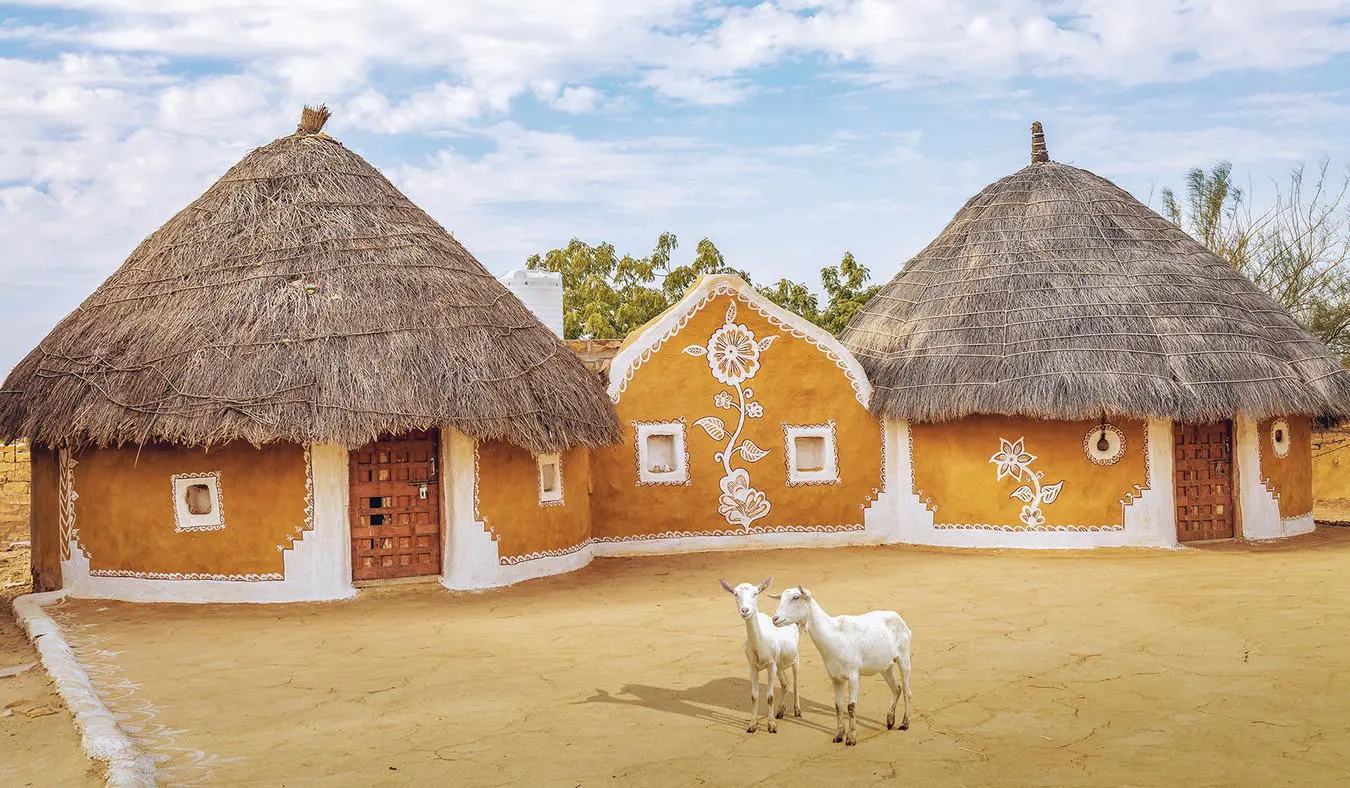
Figure 3.7 Natural building materials remain very important, especially in rural areas where they can be obtained locally, such as these houses in India with roofs made of thatch from local grasses.
(Roop_Dey/Shutterstock)
A conservation biology perspective on the use of organisms for materials parallels our earlier discussion about using organisms for food – wild relatives of domestic populations, wild species that might be domesticated, and direct use of wild species. One issue stands out: the overexploitation of wild populations for materials seems particularly unacceptable when they are used to produce nonessential items, especially status symbols for wealthy people such as luxurious fur coats, ivory knickknacks, elephant feet for trash baskets, snakeskin boots, rhino‐horn dagger handles, or Brazilian rosewood guitars.
One of the single biggest uses we make of other living creatures, measured in gigatons, is burning them as biomass fuel. Trees provide most of this material, with over two of the seven billion people on Earth relying on wood for cooking and heating (FAO; see www.fao.org/forestry/energy); peat and agricultural residues are another significant portion. Of course, all forms of life are full of carbon and will burn given sufficient heat and oxygen. Closely related to fuel are various oils and waxes used for lubricants, chemical feedstocks, and other specialized uses. Some of these substances are unique to certain species. For example, sperm whale oil has special properties as a lubricant, properties so valuable that sperm whale populations have been grossly overexploited. Fortunately, scientists have discovered that a plant, the jojoba, which can easily be cultivated, produces an oil with qualities very similar to sperm whale oil, enabling sperm whales to slowly recover.
A person's requirements for food, clothing, shelter, tools, and fuel are fundamental, but we also have emotional needs that drive our search for well‐being. Virtually all of us find pleasure in interacting with other people, and most of us also seek enjoyment from our interactions with other living creatures. Enjoying another species does not necessarily require economic activity, but, in practice, our attraction to other species involves large sums of money ( Fig. 3.8). Keeping pets and growing ornamental plants are the basis for enormous businesses. Dogs, cats, and roses may be a large part of this trade, but thousands of species from ants to zinnias are involved, and most of them are not domesticated.
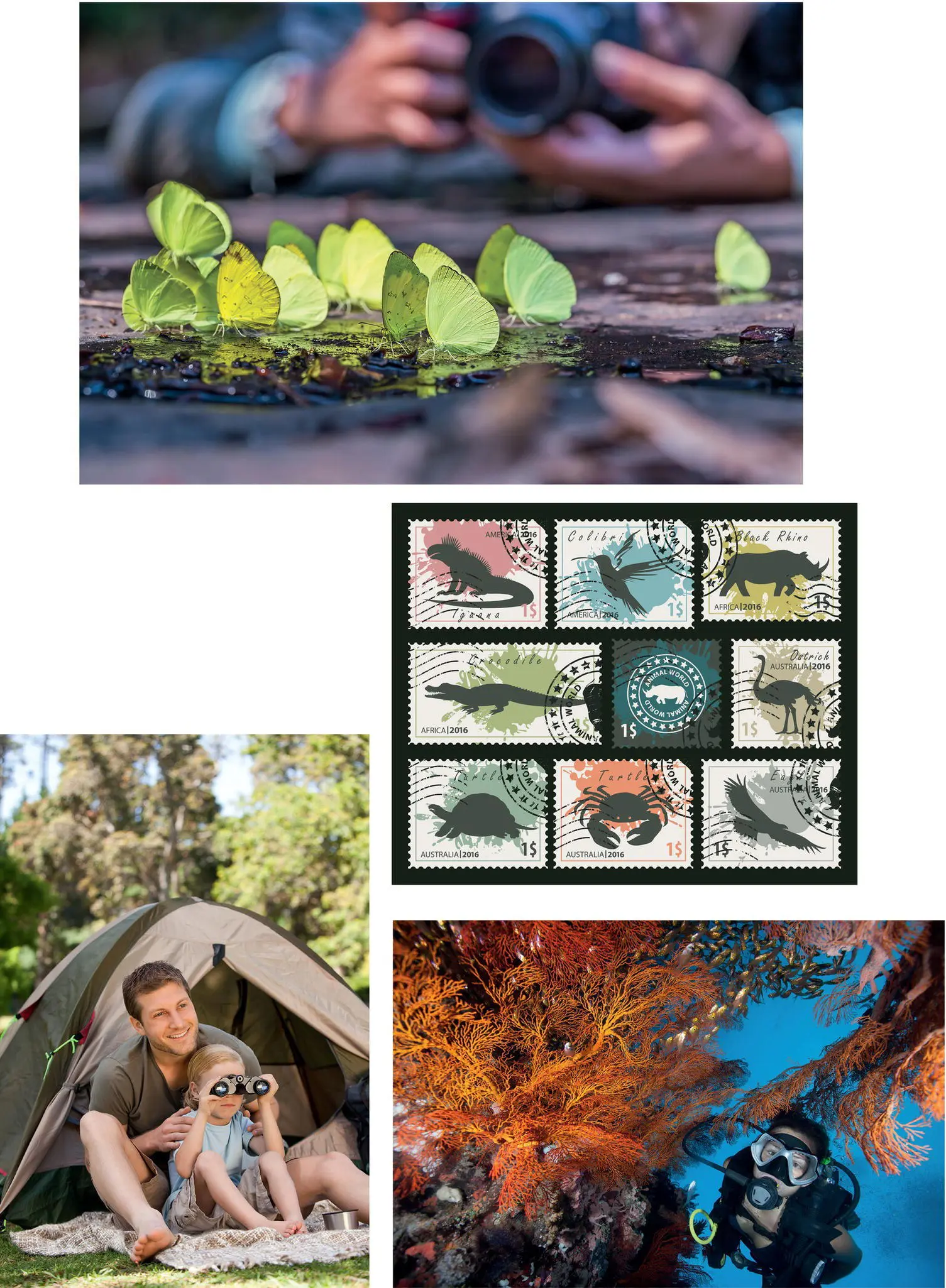
Figure 3.8 People enjoy the diversity of nature in many ways. Some seek particular species; some just wish to enjoy a beautiful, peaceful environment; for some, nature inspires indoor hobbies.
(Matee Nusermn/Shutterstock, paseven/Shutterstock, wavebreakmedia/Shutterstock, Daniel Wilhelm Nilsson/Shutterstock, top to bottom, left to right)
The selling of encounters with wild plants and animals is part of a substantial enterprise known as nature tourism or ecotourism (Wearing and Schweinsberg 2018), a growing component of mass tourism, the largest industry on Earth. People pay to travel long distances for the privilege of seeing redwoods, coral reefs, whales, lions, and many other species. Most ecotourists carry expensive cameras and binoculars; some of them carry guns or fishing rods. Overall, hunters and anglers pay the highest sums to pursue their recreation, sometimes thousands of dollars per person per day. Closer to home, backyard interactions with wild creatures are the basis for large sales: sales of wild bird food, bird feeders, birdhouses, and birdbaths tally over $5 billion per year in the United States alone (US Fish and Wildlife Service 2018). In the home, hobbyists assemble collections of butterflies and mollusk shells, as well as books, paintings, sculptures, and stamps with flora and fauna themes.
Diversity is the spice of life, and species diversity is a key element in the recreational value of organisms. Many gardeners, exotic pet fanciers, and shell and butterfly collectors want to own species that their friends do not have, and they will pay handsomely for the privilege. Similarly, birders, botanizers, hunters, and anglers covet experiences with species they have not encountered before.
Most of the economic values described previously involve species that serve as goods – physical objects that people can use – but there are some exceptions. When wild relatives of domestic species provide genetic information for plant and animal breeders, or when wild species give enjoyment to outdoor recreationists, they are providing services rather than goods. Other examples include the pollination services rendered to farmers by bees, bats, gnats, and other species, the aeration of soils and decomposition of organic matter by earthworms and many other organisms, and the removal of pollutants from air and water by plants and other organisms (for example, bacteria play an important role in degrading crude oil after accidental spills). Many of these services are not routinely purchased and could be described as ecological values, which we will address in subsequent sections. On the other hand, the absence of these services often has direct, easily measured economic costs; for example, farmers often have to rent beehives because wild pollinators have been decimated by insecticides, and the global value of pollination services has been estimated at $153 billion (Gallai et al. 2009).
Who does not delight in the beauty of a calypso orchid? We are all inspired by the majesty of a golden eagle. We find spiritual comfort in the transformation of a caterpillar into a monarch butterfly. The sight of baby animals usually activates our own nurturing instincts. In other words, people love living things, a phenomenon called “biophilia” by E. O. Wilson (1984).
It is easy to find evidence of our aesthetic, spiritual, and emotional affinity for other species. This linkage is revealed in the symbols we choose for our governments, religions, businesses, and athletic teams; think of the sugar maple leaf emblem of Canada, the wild animal totems of Native American tribes, the Jaguar sports car, the banana slug mascot of the University of California at Santa Cruz. Indeed, most nations (142 of 196 by one count) have selected animal species as their national symbol, although this does not always translate into successful conservation (Hammerschlag and Gallagher 2017). We also show our affinity for certain species in the motifs we use to decorate our clothing, jewelry, and dwellings, and in the places we select to visit in our leisure time. Our language – busy as a bee, an eager beaver, happy as a clam – reveals the depth of this linkage (Sommer and Sommer 2011).
Читать дальше
